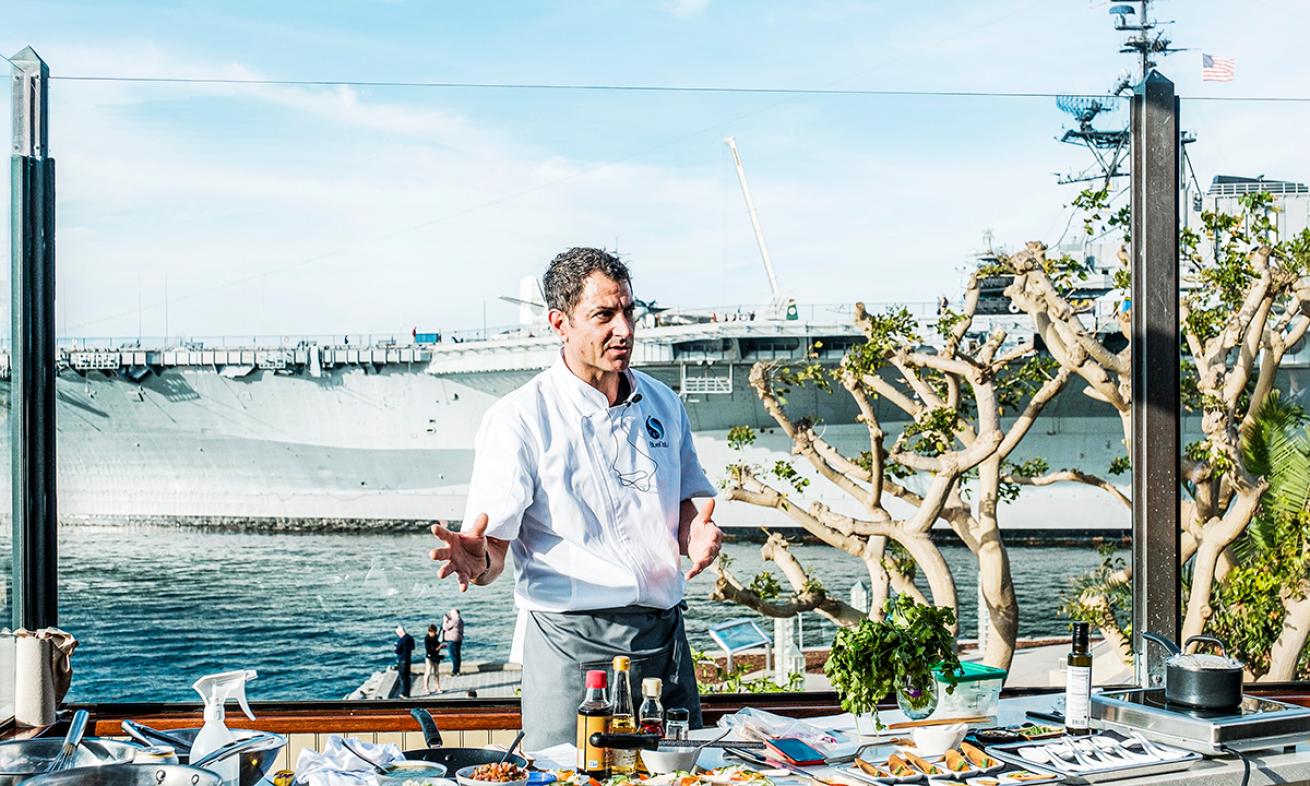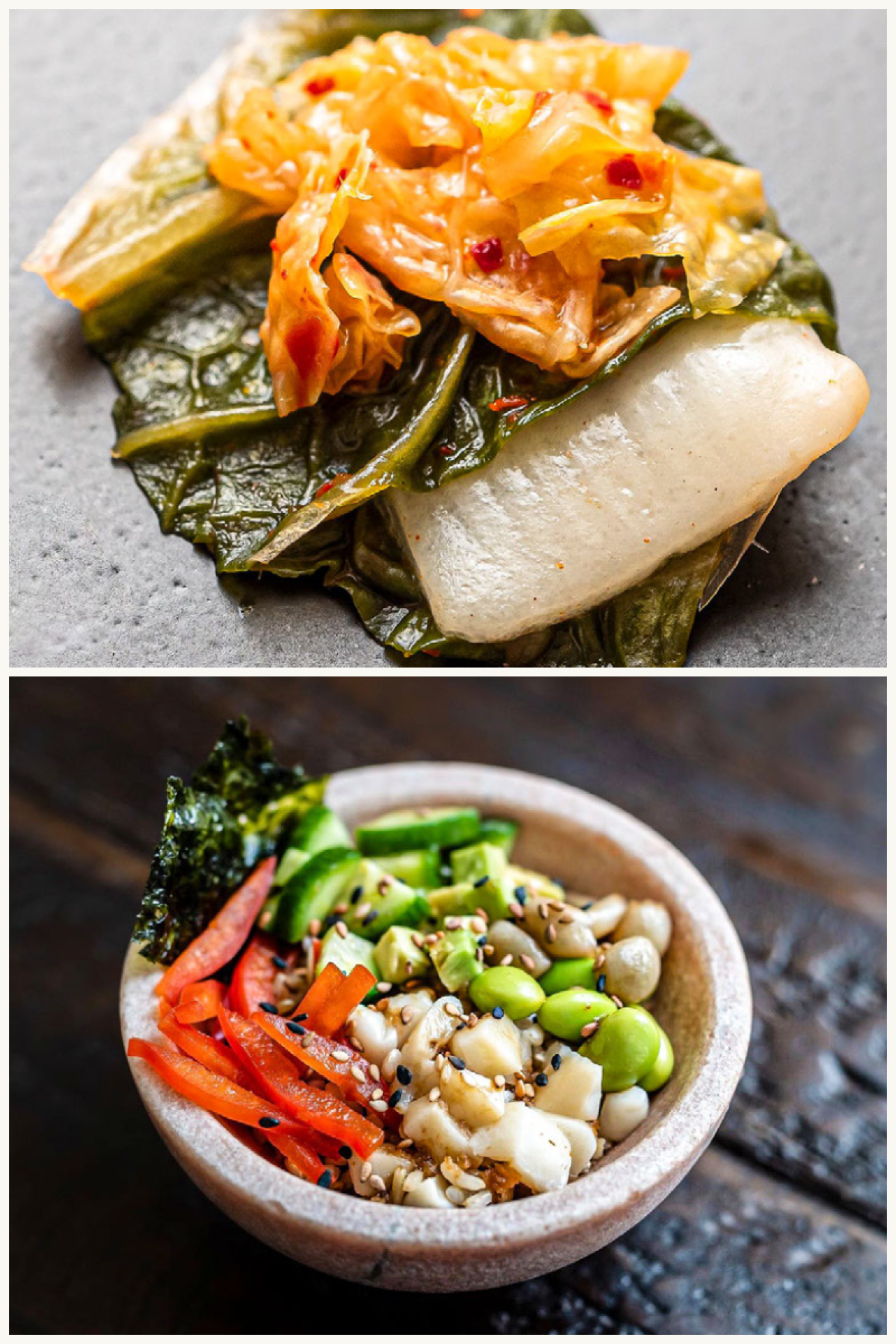Can Lab-Grown Fish Fillets Fight Overfishing?

Courtesy BlueNaluBlueNalu chef Gerard Viverito with cell-cultured yellowtail dishes.
Between rampant overfishing and microplastics in the ocean food chain, scientists are racing to find sustainable means to produce commercial seafood. Could fish that never touch water be the solution?
BlueNalu thinks so. The California-based biotech company is at the forefront of cellular aquaculture—taking cells from live fish and growing them in a controlled environment to produce fish fillets for human consumption.
“It’s all about matching the same nutritional, culinary and sensory experiences you would have when enjoying conventional bluefin tuna, for example, or red snapper or mahimahi,” all fish BlueNalu is working on, says CEO Lou Cooperhouse.
Over 30 percent of commercial fish stocks are overfished, and about 60 percent are fished to capacity, according to the United Nations. Some researchers estimate products could hit restaurants in less than five years and large-scale supermarkets by the end of the decade, reducing pressure on fisheries and giving threatened populations a chance to rebound.

Courtesy BlueNaluBlueNalu yellowtail with kimchi; in a poke bowl.
Others, like a research team at the University of California, Santa Barbara, are more skeptical about whether conservation impacts will be seen in the short term, if at all: “It really is a long and narrow path, with many hurdles along the way,” says UCSB professor and lead author Benjamin Halpern. “The odds are stacked against it.”
In a recently published paper in the journal Fish and Fisheries, his team lays out nine key events that will need to happen before marine life sees any benefit, each with its own subset of challenges. Steps include getting costs down to competitive levels and decreasing demand so steeply that fishers actually need to fish less. The biggest feat may be getting the public on board with lab fillets.
“I think step four, getting widespread behavior change to happen to adopt cell-cultured seafood and, importantly, disadopt eating wild-caught fish, is the most difficult step,” Halpern says.
To overcome this hurdle, BlueNalu created the site Eat Blue to teach consumers about topics like ocean health and the blue economy. “What is conventional today may become unconventional in the future,” says Greg Murphy, director of corporate development and strategic partnerships at BlueNalu. “This will have tremendous benefits for people’s health, for animal welfare and for the planet.”










